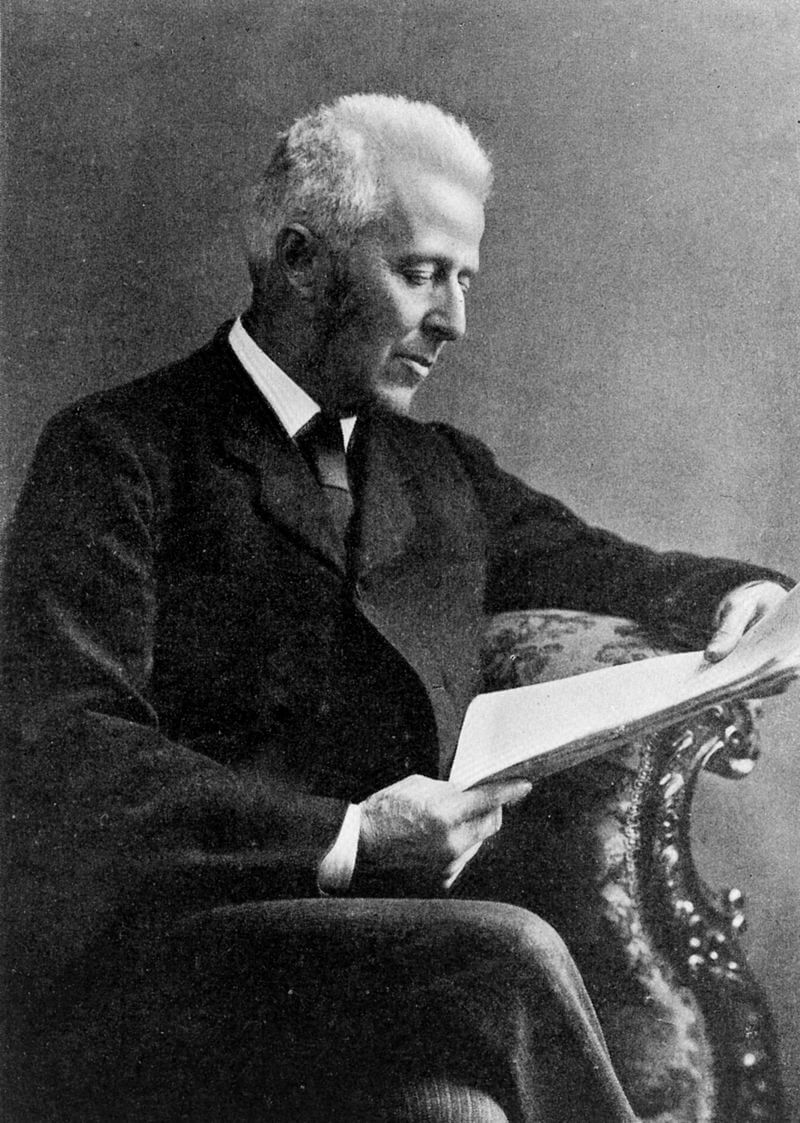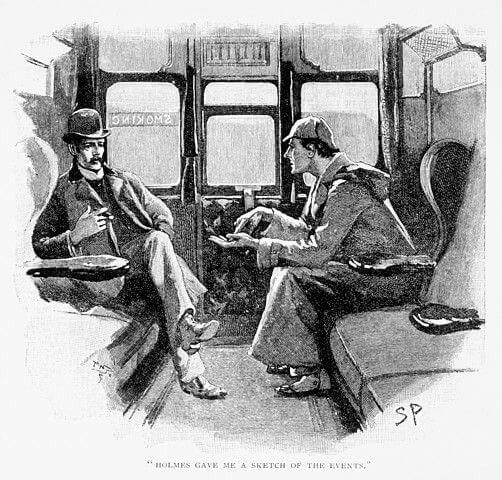I have been fascinated with the detective Sherlock Holmes since childhood. His almost supernatural powers of observation and deduction in stories such as ‘The Sign of the Four’, ‘The Speckled Band’, and ‘A Study in Scarlet’ captivated me and I have re-read them many times. More recently I have greatly enjoyed watching the TV series ‘Sherlock’ in which Benedict Cumberbatch plays a modern-day Holmes and Martin Freeman plays his sidekick Dr. Watson. I have even experimented with the mind palace technique that Sherlock used in “The Hound of the Baskerville” episode to help memorise large chunks of information for exams.
Sherlock Holmes may be one of the most famous fictional characters in literature, but many people do not realize that he was actually modelled on a real-life surgeon called Joseph Bell.
Who Was Dr. Joseph Bell?
Joseph Bell was born in Edinburgh on the 2nd December 1837, the son of Dr Benjamin Bell and his wife, Cecilia Barbara Craigie. He studied medicine at the University of Edinburgh Medical School and qualified in 1859. He was a talented and highly thought of medical student and delivered a dissertation to the Royal Medical Society as a student, which is still in their possession to this day.
Bell had an accomplished medical career and served as a personal surgeon to Queen Victoria whenever she visited Scotland, published several medical textbooks and became president of the Royal College of Surgeons of Edinburgh in 1887.
He was the great-grandchild of the forensic surgeon Dr. Benjamin Bell, a pioneer of forensics that is widely regarded as being the first surgeon to ‘practice scientifically’ and has been described as the father of the Edinburgh school of surgery. Benjamin Bell is quoted as having stated that “In medical practice it is inevitable to observe the details” and Joseph Bell certainly inherited his grandfather’s eye for detail.
Joseph Bell himself became a popular lecturer, renowned for his extraordinary observational abilities. He was able to tell from the tattoos of sailors where they had sailed, could discern a man’s origin from their accent and could tell the profession of a patient from glancing at their hands. He famously concluded that one man was an alcoholic by observing that he habitually carried a flask in the inside breast pocket of his coat. He is reported to have noted that another man was a cobbler by seeing that the inside of the knee of the man’s trousers was worn in a particular way. He could also apparently tell with great reliability that someone had lied to him by observing their behaviour and mannerisms.

Dr. Joseph Bell circa. 1910
Sir Arthur Conan Doyle and Joseph Bell
Sir Arthur Conan Doyle first met Dr. Joseph Bell in 1877 whilst he was a medical student and he served as a clerk for him for a time. Bell became Doyle’s mentor and he spent a great deal of time observing Bell’s celebrated deductive abilities. In many ways he was Dr. Watson to Bell’s Sherlock Holmes.
The following is an account of Doyle’s recollection of one particular example of Bell’s observational abilities that occurred when Bell observed a patient that he had never spoken to or met before:
“Well, my man,” Bell said, after a quick glance at the patient, “you’ve served in the army.”
“Aye, sir,” the patient replied.
“Not long discharged?”
“No, sir.”
“A Highland regiment?”
“Aye, sir.”
“A non-com officer?”
“Aye, sir.”
“Stationed at Barbados?”
“Aye, sir.”
Bell turned to his bewildered students. “You see, gentlemen,” he explained, “the man was a respectful man but did not remove his hat. They do not in the army, but he would have learned civilian’s ways had he been long discharged. He has an air of authority and he is obviously Scottish. As to Barbados, his complaint is elephantiasis, which is West Indian and not British, and the Scottish regiments are at present in that particular island.”
Very Holmes-like observational skills indeed! It is not just Holmes’ observational and deductive skills that can be attributed to Bell, but also his fashion sense. Joseph Bell is reported to have often worn a long coat and a deerstalker hat and a few famous photos of him in this attire exist.
Doyle once wrote a letter to Bell thanking him and acknowledging him for his influence in the creation of his most famous character:
“It is most certainly to you that I owe Sherlock Holmes … round the centre of deduction and inference and observation which I have heard you inculcate I have tried to build up a man.”

Holmes (wearing a long coat and deerstalker) and Watson together in an illustration by Sidney Paget.
A Long Lasting Legacy
Bell died on the 4th October 1911 and his grave can be found at the Dean Cemetery in Edinburgh alongside that of his wife, Edith Katherine Erskine Murray, and their son Benjamin, and next to his father and brother’s plots.
His legacy lives on though, and Sherlock Holmes and the many other characters based upon him continue to inspire and new generations of readers to this day.
Medical Exam Prep would like to thank Dr. Marc Barton for this guest blog post.
About Dr. Marc Barton
Dr. Marc Barton qualified from Imperial College School of Medicine in 2001. Since that time he has worked in a variety of different medical specialities. He worked as a GP partner from 2006 until 2008 and more recently as a higher specialist trainee in Emergency Medicine.
You can read more posts on the History of Medicine from him at his blog: Past Medical History





